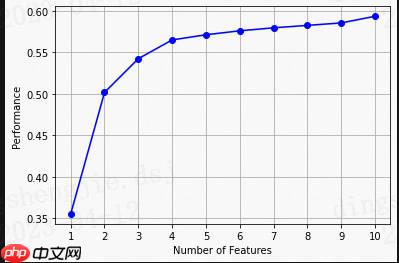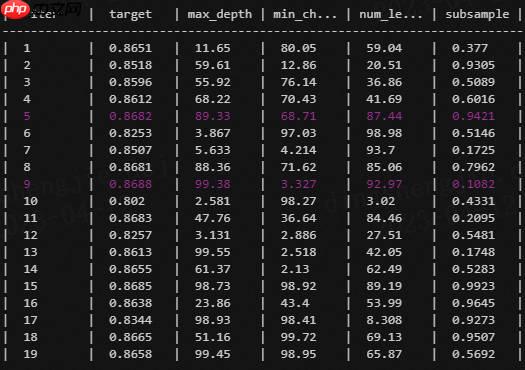该内容围绕二手车交易价格预测大赛展开,介绍赛题是回归问题,需根据给定数据集预测价格。说明了数据来源、训练集和测试集划分,以及各变量信息。还涵盖数据读取、探索、分析,模型训练(如xgb、lgb)、预测、融合等流程,包括特征工程和模型优化等内容。
☞☞☞AI 智能聊天, 问答助手, AI 智能搜索, 免费无限量使用 DeepSeek R1 模型☜☜☜

二手车交易价格预测大赛赛题以二手车市场为背景,要求选手预测二手汽车的交易价格,这是一个是非常经典项目的回归问题。为了更好的引导大家入门,本项目设置了系列学习方案,其中包括数据科学库、通用流程和baseline方案学习三部分。通过对本方案的完整学习,可以帮助掌握数据竞赛基本技能。现让更多对机器学习感兴趣小伙伴可以上手实战一下,因篇幅内容限制,将原学习项目拆解成多个notebook方便学习,只需一键fork。
推荐项目:【机器学习入门与实践】合集入门必看系列,含数据挖掘项目实战
方便入门同学快速掌握相关知识进行实战
比赛要求参赛选手根据给定的数据集,建立模型,二手汽车的交易价格。
来自 Ebay Kleinanzeigen 报废的二手车,数量超过 370,000,包含 20 列变量信息,为了保证 比赛的公平性,将会从中抽取 10 万条作为训练集,5 万条作为测试集 A,5 万条作为测试集 B。同时会对名称、车辆类型、变速箱、model、燃油类型、品牌、公里数、价格等信息进行 脱敏。
一般而言,对于数据在比赛界面都有对应的数据概况介绍(匿名特征除外),说明列的性质特征。了解列的性质会有助于我们对于数据的理解和后续分析。 Tip:匿名特征,就是未告知数据列所属的性质的特征列。
train.csv
数字全都脱敏处理,都为label encoding形式,即数字形式
本赛题的评价标准为MAE(Mean Absolute Error):
MAE=n∑i=1n∣yi−y^i∣
其中yi代表第i个样本的真实值,其中y^i代表第i个样本的预测值。
一般问题评价指标说明:
什么是评估指标:
评估指标即是我们对于一个模型效果的数值型量化。(有点类似与对于一个商品评价打分,而这是针对于模型效果和理想效果之间的一个打分)
一般来说分类和回归问题的评价指标有如下一些形式:
分类算法常见的评估指标如下:
对于回归预测类常见的评估指标如下:
平均绝对误差 平均绝对误差(Mean Absolute Error,MAE):平均绝对误差,其能更好地反映预测值与真实值误差的实际情况,其计算公式如下:
MAE=N1i=1∑N∣yi−y^i∣
均方误差 均方误差(Mean Squared Error,MSE),均方误差,其计算公式为:
MSE=N1i=1∑N(yi−y^i)2
R2(R-Square)的公式为: 残差平方和:
SSres=∑(yi−y^i)2
总平均值:
SStot=∑(yi−yi)2
其中y表示y的平均值 得到R2表达式为:
R2=1−SStotSSres=1−∑(yi−y)2∑(yi−y^i)2
R2用于度量因变量的变异中可由自变量解释部分所占的比例,取值范围是 0~1,R2越接近1,表明回归平方和占总平方和的比例越大,回归线与各观测点越接近,用x的变化来解释y值变化的部分就越多,回归的拟合程度就越好。所以R2也称为拟合优度(Goodness of Fit)的统计量。
yi表示真实值,y^i表示预测值,yi表示样本均值。得分越高拟合效果越好。
了解赛题
赛题概况
数据概况
预测指标
分析赛题
数据读取pandas
分类指标评价计算示例
回归指标评价计算示例
EDA探索
特征工程
建模调参,相关原理介绍与推荐
模型融合
# 下载数据!wget http://tianchi-media.oss-cn-beijing.aliyuncs.com/dragonball/DM/data.zip# 解压下载好的数据!unzip data.zip
# 导入函数工具## 基础工具import numpy as npimport pandas as pdimport warningsimport matplotlibimport matplotlib.pyplot as pltimport seaborn as snsfrom scipy.special import jnfrom IPython.display import display, clear_outputimport time
warnings.filterwarnings('ignore')
%matplotlib inline## 模型预测的from sklearn import linear_modelfrom sklearn import preprocessingfrom sklearn.svm import SVRfrom sklearn.ensemble import RandomForestRegressor,GradientBoostingRegressor## 数据降维处理的from sklearn.decomposition import PCA,FastICA,FactorAnalysis,SparsePCAimport lightgbm as lgbimport xgboost as xgb## 参数搜索和评价的from sklearn.model_selection import GridSearchCV,cross_val_score,StratifiedKFold,train_test_splitfrom sklearn.metrics import mean_squared_error, mean_absolute_error## 通过Pandas对于数据进行读取 (pandas是一个很友好的数据读取函数库)Train_data = pd.read_csv('/home/aistudio/dataset/used_car_train_20200313.csv', sep=' ')
TestA_data = pd.read_csv('/home/aistudio/dataset/used_car_testA_20200313.csv', sep=' ')## 输出数据的大小信息print('Train data shape:',Train_data.shape)print('TestA data shape:',TestA_data.shape)Train data shape: (150000, 31) TestA data shape: (50000, 30)
## 通过.head() 简要浏览读取数据的形式Train_data.head()
SaleID name regDate model brand bodyType fuelType gearbox power \
0 0 736 20040402 30.0 6 1.0 0.0 0.0 60
1 1 2262 20030301 40.0 1 2.0 0.0 0.0 0
2 2 14874 20040403 115.0 15 1.0 0.0 0.0 163
3 3 71865 19960908 109.0 10 0.0 0.0 1.0 193
4 4 111080 20120103 110.0 5 1.0 0.0 0.0 68
kilometer ... v_5 v_6 v_7 v_8 v_9 v_10 \
0 12.5 ... 0.235676 0.101988 0.129549 0.022816 0.097462 -2.881803
1 15.0 ... 0.264777 0.121004 0.135731 0.026597 0.020582 -4.900482
2 12.5 ... 0.251410 0.114912 0.165147 0.062173 0.027075 -4.846749
3 15.0 ... 0.274293 0.110300 0.121964 0.033395 0.000000 -4.509599
4 5.0 ... 0.228036 0.073205 0.091880 0.078819 0.121534 -1.896240
v_11 v_12 v_13 v_14
0 2.804097 -2.420821 0.795292 0.914762
1 2.096338 -1.030483 -1.722674 0.245522
2 1.803559 1.565330 -0.832687 -0.229963
3 1.285940 -0.501868 -2.438353 -0.478699
4 0.910783 0.931110 2.834518 1.923482
[5 rows x 31 columns]## 通过 .info() 简要可以看到对应一些数据列名,以及NAN缺失信息Train_data.info()
<class 'pandas.core.frame.DataFrame'> RangeIndex: 150000 entries, 0 to 149999 Data columns (total 31 columns): # Column Non-Null Count Dtype --- ------ -------------- ----- 0 SaleID 150000 non-null int64 1 name 150000 non-null int64 2 regDate 150000 non-null int64 3 model 149999 non-null float64 4 brand 150000 non-null int64 5 bodyType 145494 non-null float64 6 fuelType 141320 non-null float64 7 gearbox 144019 non-null float64 8 power 150000 non-null int64 9 kilometer 150000 non-null float64 10 notRepairedDamage 150000 non-null object 11 regionCode 150000 non-null int64 12 seller 150000 non-null int64 13 offerType 150000 non-null int64 14 creatDate 150000 non-null int64 15 price 150000 non-null int64 16 v_0 150000 non-null float64 17 v_1 150000 non-null float64 18 v_2 150000 non-null float64 19 v_3 150000 non-null float64 20 v_4 150000 non-null float64 21 v_5 150000 non-null float64 22 v_6 150000 non-null float64 23 v_7 150000 non-null float64 24 v_8 150000 non-null float64 25 v_9 150000 non-null float64 26 v_10 150000 non-null float64 27 v_11 150000 non-null float64 28 v_12 150000 non-null float64 29 v_13 150000 non-null float64 30 v_14 150000 non-null float64 dtypes: float64(20), int64(10), object(1) memory usage: 35.5+ MB
## 通过 .columns 查看列名Train_data.columns
Index(['SaleID', 'name', 'regDate', 'model', 'brand', 'bodyType', 'fuelType',
'gearbox', 'power', 'kilometer', 'notRepairedDamage', 'regionCode',
'seller', 'offerType', 'creatDate', 'price', 'v_0', 'v_1', 'v_2', 'v_3',
'v_4', 'v_5', 'v_6', 'v_7', 'v_8', 'v_9', 'v_10', 'v_11', 'v_12',
'v_13', 'v_14'],
dtype='object')TestA_data.info()
<class 'pandas.core.frame.DataFrame'> RangeIndex: 50000 entries, 0 to 49999 Data columns (total 30 columns): # Column Non-Null Count Dtype --- ------ -------------- ----- 0 SaleID 50000 non-null int64 1 name 50000 non-null int64 2 regDate 50000 non-null int64 3 model 50000 non-null float64 4 brand 50000 non-null int64 5 bodyType 48587 non-null float64 6 fuelType 47107 non-null float64 7 gearbox 48090 non-null float64 8 power 50000 non-null int64 9 kilometer 50000 non-null float64 10 notRepairedDamage 50000 non-null object 11 regionCode 50000 non-null int64 12 seller 50000 non-null int64 13 offerType 50000 non-null int64 14 creatDate 50000 non-null int64 15 v_0 50000 non-null float64 16 v_1 50000 non-null float64 17 v_2 50000 non-null float64 18 v_3 50000 non-null float64 19 v_4 50000 non-null float64 20 v_5 50000 non-null float64 21 v_6 50000 non-null float64 22 v_7 50000 non-null float64 23 v_8 50000 non-null float64 24 v_9 50000 non-null float64 25 v_10 50000 non-null float64 26 v_11 50000 non-null float64 27 v_12 50000 non-null float64 28 v_13 50000 non-null float64 29 v_14 50000 non-null float64 dtypes: float64(20), int64(9), object(1) memory usage: 11.4+ MB
## 通过 .describe() 可以查看数值特征列的一些统计信息Train_data.describe()
SaleID name regDate model \
count 150000.000000 150000.000000 1.500000e+05 149999.000000
mean 74999.500000 68349.172873 2.003417e+07 47.129021
std 43301.414527 61103.875095 5.364988e+04 49.536040
min 0.000000 0.000000 1.991000e+07 0.000000
25% 37499.750000 11156.000000 1.999091e+07 10.000000
50% 74999.500000 51638.000000 2.003091e+07 30.000000
75% 112412499.250000 118841.250000 2.007111e+07 66.000000
max 149999.000000 196812.000000 2.015121e+07 247.000000
brand bodyType fuelType gearbox \
count 150000.000000 145494.000000 141320.000000 144019.000000
mean 8.052733 1.792369 0.375842 0.224943
std 7.864956 1.760640 0.548677 0.417546
min 0.000000 0.000000 0.000000 0.000000
25% 1.000000 0.000000 0.000000 0.000000
50% 6.000000 1.000000 0.000000 0.000000
75% 13.000000 3.000000 1.000000 0.000000
max 39.000000 7.000000 6.000000 1.000000
power kilometer ... v_5 v_6 \
count 150000.000000 150000.000000 ... 150000.000000 150000.000000
mean 119.316547 12.597160 ... 0.248204 0.044923
std 177.168419 3.919576 ... 0.045804 0.051743
min 0.000000 0.500000 ... 0.000000 0.000000
25% 75.000000 12.500000 ... 0.243615 0.000038
50% 110.000000 15.000000 ... 0.257798 0.000812
75% 150.000000 15.000000 ... 0.265297 0.102009
max 19312.000000 15.000000 ... 0.291838 0.151420
v_7 v_8 v_9 v_10 \
count 150000.000000 150000.000000 150000.000000 150000.000000
mean 0.124124692 0.058144 0.061996 -0.001000
std 0.201410 0.029186 0.035692 3.772386
min 0.000000 0.000000 0.000000 -9.168192
25% 0.062474 0.035334 0.033930 -3.722303
50% 0.095866 0.057014 0.058484 1.624076
75% 0.125243 0.079382 0.087491 2.844357
max 1.404936 0.160791 0.222787 12.357011
v_11 v_12 v_13 v_14
count 150000.000000 150000.000000 150000.000000 150000.000000
mean 0.009035 0.004813 0.000313 -0.000688
std 3.286071 2.517478 1.288988 1.038685
min -5.558207 -9.639552 -4.153899 -6.546556
25% -1.951543 -1.871846 -1.057789 -0.437034
50% -0.358053 -0.130753 -0.036245 0.141241246
75% 1.255022 1.776933 0.942813 0.680378
max 18.819042 13.847792 11.147669 8.658418
[8 rows x 30 columns]TestA_data.describe()
SaleID name regDate model brand \
count 50000.000000 50000.000000 5.000000e+04 50000.000000 50000.000000
mean 174999.500000 68542.223280 2.003393e+07 46.844520 8.056240
std 14433.901067 61052.808133 5.368870e+04 49.469548 7.819477
min 150000.000000 0.000000 1.991000e+07 0.000000 0.000000
25% 162499.750000 11203.500000 1.999091e+07 10.000000 1.000000
50% 174999.500000 52248.500000 2.003091e+07 29.000000 6.000000
75% 187499.250000 118856.500000 2.007110e+07 65.000000 13.000000
max 199999.000000 196805.000000 2.015121e+07 246.000000 39.000000
bodyType fuelType gearbox power kilometer \
count 48587.000000 47107.000000 48090.000000 50000.000000 50000.000000
mean 1.782185 0.373405 0.224350 119.883620 12.595580
std 1.760736 0.546442 0.417158 185.097387 3.908979
min 0.000000 0.000000 0.000000 0.000000 0.500000
25% 0.000000 0.000000 0.000000 75.000000 12.500000
50% 1.000000 0.000000 0.000000 109.000000 15.000000
75% 3.000000 1.000000 0.000000 150.000000 15.000000
max 7.000000 6.000000 1.000000 20000.000000 15.000000
... v_5 v_6 v_7 v_8 \
count ... 50000.000000 50000.000000 50000.000000 50000.000000
mean ... 0.248669 0.045021 0.122744 0.057997
std ... 0.044601 0.051766 0.195972 0.029211
min ... 0.000000 0.000000 0.000000 0.000000
25% ... 0.243762 0.000044 0.062644 0.035084
50% ... 0.257877 0.000815 0.095828 0.057084
75% ... 0.265328 0.102025 0.125438 0.079077
max ... 0.291618 0.153265 1.358813 0.156355
v_9 v_10 v_11 v_12 v_13 \
count 50000.000000 50000.000000 50000.000000 50000.000000 50000.000000
mean 0.062000 -0.017855 -0.013742 -0.013554 -0.003147
std 0.035653 3.747985 3.231258 2.515962 1.286597
min 0.000000 -9.160049 -5.411964 -8.916949 -4.123333
25% 0.033714 -3.700121 -1.971325 -1.876703 -1.060428
50% 0.058764 1.613212 -0.355843 -0.142779 -0.035956
75% 0.087489 2.832708 1.262914 1.764335 0.941469
max 0.214775 12.338872 18.856218 12.950498 5.913273
v_14
count 50000.000000
mean 0.001516
std 1.027360
min -6.112667
25% -0.437920
50% 0.138799
75% 0.681163
max 2.624622
[8 rows x 29 columns]#### 1) 提取数值类型特征列名numerical_cols = Train_data.select_dtypes(exclude = 'object').columnsprint(numerical_cols)
Index(['SaleID', 'name', 'regDate', 'model', 'brand', 'bodyType', 'fuelType',
'gearbox', 'power', 'kilometer', 'regionCode', 'seller', 'offerType',
'creatDate', 'price', 'v_0', 'v_1', 'v_2', 'v_3', 'v_4', 'v_5', 'v_6',
'v_7', 'v_8', 'v_9', 'v_10', 'v_11', 'v_12', 'v_13', 'v_14'],
dtype='object')categorical_cols = Train_data.select_dtypes(include = 'object').columnsprint(categorical_cols)
Index(['notRepairedDamage'], dtype='object')
#### 2) 构建训练和测试样本## 选择特征列feature_cols = [col for col in numerical_cols if col not in ['SaleID','name','regDate','creatDate','price','model','brand','regionCode','seller']]
feature_cols = [col for col in feature_cols if 'Type' not in col]## 提前特征列,标签列构造训练样本和测试样本X_data = Train_data[feature_cols]
Y_data = Train_data['price']
X_test = TestA_data[feature_cols]print('X train shape:',X_data.shape)print('X test shape:',X_test.shape)X train shape: (150000, 18) X test shape: (50000, 18)
## 定义了一个统计函数,方便后续信息统计def Sta_inf(data):
print('_min',np.min(data)) print('_max:',np.max(data)) print('_mean',np.mean(data)) print('_ptp',np.ptp(data)) print('_std',np.std(data)) print('_var',np.var(data))#### 3) 统计标签的基本分布信息print('Sta of label:')
Sta_inf(Y_data)Sta of label: _min 11 _max: 99999 _mean 5923.327333333334 _ptp 99988 _std 7501.973469876635 _var 56279605.942732885
## 绘制标签的统计图,查看标签分布plt.hist(Y_data) plt.show() plt.close()
<Figure size 640x480 with 1 Axes>
#### 4) 缺省值用-1填补X_data = X_data.fillna(-1) X_test = X_test.fillna(-1)
## xgb-Modelxgr = xgb.XGBRegressor(n_estimators=120, learning_rate=0.1, gamma=0, subsample=0.8,\
colsample_bytree=0.9, max_depth=7) #,objective ='reg:squarederror'scores_train = []
scores = []## 5折交叉验证方式sk=StratifiedKFold(n_splits=5,shuffle=True,random_state=0)for train_ind,val_ind in sk.split(X_data,Y_data):
train_x=X_data.iloc[train_ind].values
train_y=Y_data.iloc[train_ind]
val_x=X_data.iloc[val_ind].values
val_y=Y_data.iloc[val_ind]
xgr.fit(train_x,train_y)
pred_train_xgb=xgr.predict(train_x)
pred_xgb=xgr.predict(val_x)
score_train = mean_absolute_error(train_y,pred_train_xgb)
scores_train.append(score_train)
score = mean_absolute_error(val_y,pred_xgb)
scores.append(score)print('Train mae:',np.mean(score_train))print('Val mae',np.mean(scores))def build_model_xgb(x_train,y_train):
model = xgb.XGBRegressor(n_estimators=150, learning_rate=0.1, gamma=0, subsample=0.8,\
colsample_bytree=0.9, max_depth=7) #, objective ='reg:squarederror'
model.fit(x_train, y_train) return modeldef build_model_lgb(x_train,y_train):
estimator = lgb.LGBMRegressor(num_leaves=127,n_estimators = 150)
param_grid = { 'learning_rate': [0.01, 0.05, 0.1, 0.2],
}
gbm = GridSearchCV(estimator, param_grid)
gbm.fit(x_train, y_train) return gbm## Split data with valx_train,x_val,y_train,y_val = train_test_split(X_data,Y_data,test_size=0.3)
print('Train lgb...')
model_lgb = build_model_lgb(x_train,y_train)
val_lgb = model_lgb.predict(x_val)
MAE_lgb = mean_absolute_error(y_val,val_lgb)print('MAE of val with lgb:',MAE_lgb)print('Predict lgb...')
model_lgb_pre = build_model_lgb(X_data,Y_data)
subA_lgb = model_lgb_pre.predict(X_test)print('Sta of Predict lgb:')
Sta_inf(subA_lgb)print('Train xgb...')
model_xgb = build_model_xgb(x_train,y_train)
val_xgb = model_xgb.predict(x_val)
MAE_xgb = mean_absolute_error(y_val,val_xgb)print('MAE of val with xgb:',MAE_xgb)print('Predict xgb...')
model_xgb_pre = build_model_xgb(X_data,Y_data)
subA_xgb = model_xgb_pre.predict(X_test)print('Sta of Predict xgb:')
Sta_inf(subA_xgb)## 这里我们采取了简单的加权融合的方式val_Weighted = (1-MAE_lgb/(MAE_xgb+MAE_lgb))*val_lgb+(1-MAE_xgb/(MAE_xgb+MAE_lgb))*val_xgb
val_Weighted[val_Weighted<0]=10 # 由于我们发现预测的最小值有负数,而真实情况下,price为负是不存在的,由此我们进行对应的后修正print('MAE of val with Weighted ensemble:',mean_absolute_error(y_val,val_Weighted))sub_Weighted = (1-MAE_lgb/(MAE_xgb+MAE_lgb))*subA_lgb+(1-MAE_xgb/(MAE_xgb+MAE_lgb))*subA_xgb## 查看预测值的统计进行plt.hist(Y_data) plt.show() plt.close()
sub = pd.DataFrame()
sub['SaleID'] = TestA_data.SaleID
sub['price'] = sub_Weighted
sub.to_csv('./sub_Weighted.csv',index=False)sub.head()
因篇幅内容限制,将原学习项目拆解成多个notebook方便学习,只需一键fork。




简单加权融合:
stacking/blending:
boosting/bagging(在xgboost,Adaboost,GBDT中已经用到):
训练:

预测:

以上就是【机器学习入门与实践】二手车价格交易预测含EDA、特征工程、特征优化、模型融合的详细内容,更多请关注php中文网其它相关文章!

每个人都需要一台速度更快、更稳定的 PC。随着时间的推移,垃圾文件、旧注册表数据和不必要的后台进程会占用资源并降低性能。幸运的是,许多工具可以让 Windows 保持平稳运行。

Copyright 2014-2025 https://www.php.cn/ All Rights Reserved | php.cn | 湘ICP备2023035733号